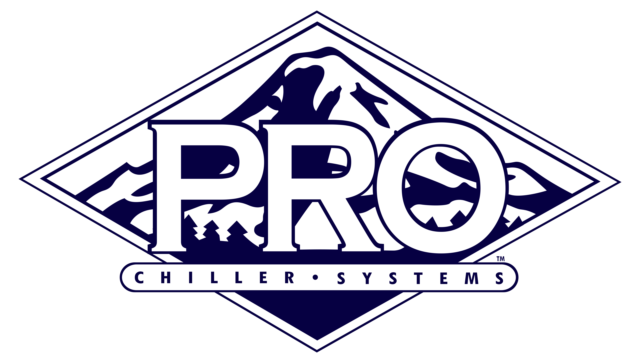As advisers, we are trained to retrieve this information. We also have the knowledge and experience to read the signals the cow presents as she moves, feeds or rests. The ability to retrieve computer reports combined with an ability to read a cow’s signals gives us the opportunity to help our clients make positive changes to improve herd performance.
This task can be taught to those with curiosity, a drive to learn and a desire to improve. It has been said that it takes a unique individual to walk through a herd of cattle and tease out similar information. I will tell you that it takes a keen eye, a lot of cow sense and patience. So what is it with these new robot barns and why do some operators struggle to find the information that is right in front of them? Are the dairy cows that much different? Let’s talk about what your cows are telling you in your robotic milking facility.
Today’s automated milking systems are collecting over 100 different pieces of information every time the cow enters the robot or, in some cases, via a remote antenna. From this information, we can begin to understand what is happening within the herd. In addition, the cows are talking and you need to be trained to listen and understand their form of communication. Here are just four of the many things to be looking for as a cow in an automated milking system communicates with you. Do you see the cow lying in the stall leaking milk? Does it dance around while in the robot? Are you fetching a lot of cows? When fetching, do several cows get up and move away from you or around the pen together?
The following information will help you interpret and troubleshoot each of these scenarios.
1. Leaking milk in the stall
This is a clear sign the cow has lost its motivation to go to the robot. Contrary to common belief, in my opinion, cows do not seek udder relief in an automated milking system. They are driven to the robot via a tasty treat that helps cows meet their energy needs. It is not anymore complicated than that. If the cow is not moving to the milking system on its own, you have either not trained it well enough, the treat you are offering does not interest it or its energy needs are being met elsewhere. This makes the assumption the cow is not sick or lame. Either of those two conditions will be the real issue if that has occurred.
2. Dancing around in the robot
Dancing around in the robot is a cow’s way of telling you it is anticipating discomfort from improper milking. If we are not creating a spa-like experience every time a cow enters and if it does not continue for the entire time it is in or near the the robot, the cow is unlikely to return many times in the future regardless of how tasty the feed offered is or how much energy we remove from the partially mixed ration (PMR). This situation can also have many causes, and you should seek help from an experienced individual who has the knowledge and cow sense to identify what the issues are and how to correct them.
It is not always as easy as just replacing the inflations on the machine. In fact, it is rare that a single correction solves the problem. It is usually a combination of proper stimulation time, take-off setting, vacuum and proper design and sizing of inflations that makes the difference. Too many service people like to “sell” the magic single fix, but it is more complicated than that. All parts of the milking system should be set and sized to your unique circumstances and the capability of your brand of automated milking system. You can easily see on any social media platform individuals boasting about how well a single fix worked, and you can also easily find other people who failed using the same fix.
Those who succeeded are those who took the time and employed an experienced, certified adviser to assist in making the correct fix to solve the problem. I grant you permission to ask for help, but ask for it from an experienced, certified adviser. This technology is evolving at a pace that makes it difficult for an uncertified adviser to keep up.
3. Fetching a lot of cows?
This problem is a little harder to define. It’s the least understood and the most commonly misdiagnosed problem. You need to employ a trained and experienced individual to help identify what is causing this for your particular farm. Remember or refer to my article in the Jan. 1, 2019, issue of Progressive Dairyman titled, “Robots require a team approach.” Some causes of having to fetch too many cows can be settings on the automated milking system, poor barn design, energy needs being met or too much human interference, just to name a few. You could be spending too much time in the pens, disturbing the flow, causing the issue of a larger fetch list. Dropping energy out of the PMR is not always the answer and can lead to a down trend in performance over time.
Evidence shows cows will visit more and let their milk down faster, resulting in less box time, when humans are not in the animals’ presence. This is where the free-flow pen design is different from previous designs. If you manage the herd in subgroups, you are most likely causing a problem. Cows thrive on individual autonomy. I have written before that if you separate, sort, move or manage your animals in mini groups, you are not allowing the cow to have autonomy. You are encouraging group behavior, and the cow will wait for you to come get it with a group of its buddies to escort them to the automated milking system just as you did in a conventional parlor system.
If you are fetching cows to just complete the task of a computer-generated list, you must reconsider how you approach this task. You need the help of an individual who has real experience with automated milking systems. Work with that individual to develop a plan that will meet your goals and encourage cow autonomy.
4. When you go out to fetch cows, do several get up and move away from you?
This is another sign that you need to reconsider what you are doing. In most well-managed automated milking systems, you should be able to retrieve a single cow and escort her to the robot without disturbing any other cow in the pen. If this is not happening in your herd, it can be you still have a group or are creating a group mentality. It can also be poor cow handling. Now this might ruffle some feathers, but at least hear me out. For many years, you were trained to guide the cow to the parlor two or three times a day for the milking process and then guide her back to her living space.
This was a daily routine, and the employees and the cows became very accustomed to the routines. In fact, as an adviser, I encouraged a calm routine to accomplish this process. The cows would begin to get up and head to the parlor with the turning on of lights, opening the gates, the whistle of an employee and so on. They were showing us they like to do it themselves. In an automated milking system, if they are truly doing it autonomously, they should not be getting up as a group and heading to the robot at the sight, sound or actions of humans.
This is also where an experienced, certified adviser can help train you and your employees. Your adviser can show you how to properly train your cows to automated milking. I have met and heard from frustrated dairy producers, and many of the unfavorable stories about automated milking can be traced back to the lack of understanding of cow autonomy. I have said it many times: “Cows train easy. It’s the people who train hard.”
Interest in and use of automated milking is a rapidly growing segment of our dairy industry. Spend time to learn cow language to enhance the experience for you and your cows. ![]()

-
Todd R. Ward
- Direct Dairy Nutrition Services LLC
- Cows Come First LLC
- Email Todd R. Ward






